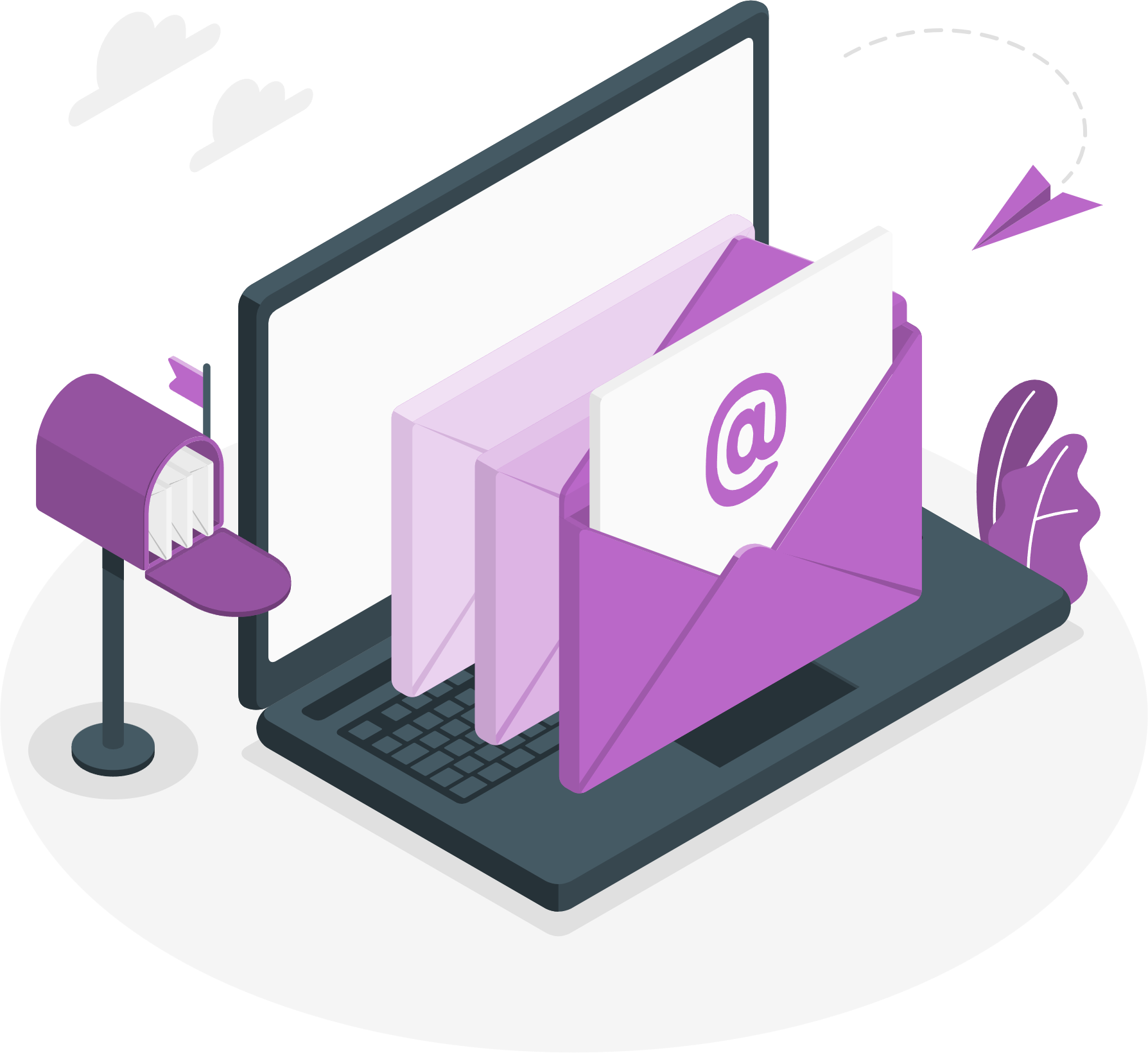Automated email series campaigns can increase open rates by 70.5% and click-through rates by 152% compared to standalone emails, according to recent studies. These impressive statistics highlight the potential power of automated email series in driving engagement and conversions. However, to harness this power effectively, it’s essential to measure and track the success of these campaigns meticulously.
At Email Engagement Pros, we understand the vital role that measuring success plays in optimizing your automated email series campaigns. In this blog, we will delve into why it’s crucial to track and measure the performance of your campaigns, and we’ll explore the key metrics that provide valuable insights into your campaign’s effectiveness. These metrics include open rates, click-through rates (CTR), conversion rates, bounce rates, and unsubscribe rates. Understanding these metrics enables you to make data-driven decisions that enhance your campaign’s impact.

In addition, we’ll cover strategies for effective measurement, including setting clear objectives, conducting A/B testing, leveraging segmentation and personalization, and maintaining regular monitoring and analysis. These strategies will help you optimize your campaigns and ensure they resonate with your audience.
The Importance of Measuring Success
At Email Engagement Pros, we know that measuring the success of your automated email series campaigns is crucial for several reasons. First, it allows you to gauge the effectiveness of your efforts and understand what works and what doesn’t. By tracking key metrics, you can identify trends, spot issues early, and make necessary adjustments to improve performance. Second, it helps demonstrate the ROI of your email marketing efforts, providing tangible evidence of their value to stakeholders. Finally, continuous measurement and optimization foster a culture of improvement, ensuring your email campaigns remain effective and relevant in an ever-evolving digital landscape.
Stay with us as we guide you through the essential steps to measure and optimize your automated email series campaigns, helping you achieve the best possible results with Email Engagement Pros.

Understanding Key Metrics
Open Rates
Definition: Open rates represent the percentage of recipients who open your email out of the total number of emails delivered. It is calculated by dividing the number of emails opened by the number of emails sent, minus the bounced emails.
Importance: Open rates are a crucial indicator of how effective your email subject lines and sender reputation are. High open rates suggest that your subject lines are compelling and your recipients recognize and trust your sender name. Conversely, low open rates can indicate that your emails are not catching the recipient’s attention or are landing in spam folders.
How to Improve:
- Compelling Subject Lines: Craft subject lines that are intriguing, concise, and relevant to the audience. Use questions, personalization, and urgency to draw interest.
- Personalization: Personalize emails by including the recipient’s name or other relevant details in the subject line.
- Testing: A/B test different subject lines to see which ones generate higher open rates.
- Sender Name: Use a recognizable and trustworthy sender name that recipients will recognize and trust.
Click-Through Rates (CTR)
Definition: Click-through rate (CTR) is the percentage of recipients who clicked on one or more links within your email. It is calculated by dividing the number of clicks by the number of delivered emails.
Importance: CTR is a vital metric because it measures the engagement level of your audience with your email content. A high CTR indicates that your content is relevant and your call-to-action (CTA) is effective. It directly correlates to the level of interest and interaction your recipients have with the email content.
How to Improve:
- Clear Call-to-Action (CTA): Ensure your CTA is prominent, clear, and compelling. Use action-oriented language that tells the recipient exactly what to do next.
- Engaging Content: Provide valuable and engaging content that resonates with your audience. Use images, videos, and infographics to make the content more appealing.
- Personalization: Tailor your content to the specific interests and needs of your audience. Personalized recommendations or offers can significantly increase CTR.
- Mobile Optimization: Make sure your emails are optimized for mobile devices, as a significant portion of email opens and clicks occur on mobile.
Conversion Rates
Definition: Conversion rate in email marketing is the percentage of recipients who completed the desired action (such as making a purchase or signing up for a service) after clicking through your email. It is calculated by dividing the number of conversions by the number of total delivered emails.
Importance: Conversion rates are the ultimate measure of your email campaign’s effectiveness in driving the desired actions. High conversion rates indicate that your email content is not only engaging but also persuasive enough to encourage recipients to take action.
How to Improve:
- Targeted Offers: Use data and segmentation to send targeted offers that are highly relevant to each recipient’s needs and preferences.
- Landing Page Optimization: Ensure the landing pages recipients are directed to are optimized for conversions. They should be relevant, fast-loading, and easy to navigate.
- Clear and Persuasive Content: Craft compelling content that clearly outlines the benefits of taking the desired action.
- Follow-Up Emails: Use automated follow-up emails to remind and encourage recipients who showed interest but did not convert.
Bounce Rates
Definition: Bounce rates represent the percentage of emails that were not successfully delivered to the recipient’s inbox. There are two types of bounces: hard bounces (permanent delivery failures) and soft bounces (temporary issues).
Importance: Monitoring bounce rates is essential because high bounce rates can negatively affect your sender reputation and deliverability. They can also indicate issues with your email list quality.
How to Improve:
- Clean Email List: Regularly clean your email list to remove invalid or outdated email addresses.
- Avoid Spam Triggers: Ensure your emails do not contain elements that might trigger spam filters.
- Confirm Opt-Ins: Use double opt-in processes to ensure the email addresses on your list are valid and belong to engaged subscribers.
Unsubscribe Rates
Definition: Unsubscribe rates represent the percentage of recipients who opt out of your email list after receiving your email. It is calculated by dividing the number of unsubscribes by the number of delivered emails.
Importance: High unsubscribe rates can be a red flag, indicating that your content is not meeting the expectations or needs of your audience. It’s essential to monitor this metric to maintain a healthy and engaged email list.
How to Improve:
- Provide Value: Ensure that every email provides value to the recipient, whether through information, offers, or entertainment.
- Segment Lists: Segment your email list to send more targeted and relevant content to different groups of recipients.
- Frequency: Find the right balance in email frequency to avoid overwhelming your subscribers.
- Feedback: Ask for feedback from unsubscribers to understand their reasons and improve your future emails.
By understanding and optimizing these key metrics, you can significantly enhance the effectiveness of your automated email series campaigns with Email Engagement Pros.
Strategies for Effective Measurement
Setting Clear Objectives
Importance: Setting clear, measurable objectives is crucial for the success of any automated email series campaign. Objectives provide direction and purpose, ensuring that every aspect of your campaign is aligned with your overarching goals. Without specific objectives, it becomes challenging to evaluate the effectiveness of your efforts and make necessary adjustments. Clear objectives also help in defining success and measuring the return on investment (ROI).

Examples:
- Increasing Sales: An objective could be to increase sales by 20% over the next quarter through targeted email campaigns.
- Boosting Website Traffic: Aim to boost website traffic by 30% by driving more email recipients to your site.
- Enhancing Customer Engagement: Increase engagement rates by 25% by encouraging recipients to interact with your content.
- Growing Subscriber List: Expand your email subscriber list by 15% over the next six months through lead generation campaigns.
A/B Testing
Definition: A/B testing, also known as split testing, involves sending two versions of an email to small, random segments of your audience to determine which version performs better. The winning version is then sent to the remaining recipients.
Importance: A/B testing is essential for optimizing email campaigns because it allows you to experiment with different elements and identify what resonates best with your audience. This iterative approach leads to continuous improvement and higher engagement rates.
How to Conduct:
- Identify Variables: Decide which elements to test, such as subject lines, email content, images, CTAs, or send times.
- Create Variations: Develop two versions of the email with only one variable changed to isolate its impact.
- Divide Your Audience: Randomly split a small segment of your audience into two groups.
- Analyze Results: Compare the performance of both versions using key metrics like open rates, CTR, and conversion rates.
- Implement Changes: Send the winning version to the rest of your audience and apply insights to future campaigns.
Segmentation and Personalization
Importance: Segmentation and personalization are vital for measuring success because they ensure that your emails are relevant and tailored to the needs and preferences of different audience segments. Personalized emails can significantly increase engagement and conversion rates.
Strategies:
- Behavior-Based Segmentation: Segment your audience based on their past behavior, such as purchase history, browsing activity, or engagement with previous emails.
- Demographic Segmentation: Use demographic information like age, gender, location, and occupation to tailor your messages.
- Preference-Based Segmentation: Allow subscribers to set their preferences and segment your list accordingly.
- Dynamic Content: Use dynamic content to personalize emails for different segments, making the content more relevant and engaging.
By implementing these strategies, you can effectively measure and optimize the performance of your automated email series campaigns, ensuring they deliver maximum value and engagement.
Common Pitfalls and How to Avoid Them
Ignoring Metrics
Pitfall: Ignoring metrics is one of the most significant mistakes in email marketing. When you don’t track key performance indicators (KPIs) like open rates, click-through rates (CTR), and conversion rates, you lose valuable insights into how your campaigns are performing. This can lead to a lack of understanding about what resonates with your audience, resulting in ineffective email campaigns that fail to engage recipients or achieve business goals. Additionally, without tracking metrics, it’s impossible to identify issues such as low deliverability, high bounce rates, or increasing unsubscribe rates, which can harm your sender reputation and overall email marketing success.

Solution: To avoid this pitfall, establish a routine for consistent monitoring and analysis of your email metrics. Here are some tips:
- Set Clear Goals: Define what success looks like for each campaign by setting specific, measurable objectives.
- Use Analytics Tools: Utilize the analytics tools provided by your email service provider (ESP) and integrate additional tools like Google Analytics to get a comprehensive view of your campaign performance.
- Regular Reporting: Create regular reports (weekly or monthly) to track your metrics and identify trends or issues early.
- Automate Reports: Use automation features to generate and deliver performance reports to your team regularly.
- Review and Adjust: Regularly review your metrics and make data-driven adjustments to your email campaigns to improve performance.
Overlooking the Customer Journey
Pitfall: Focusing solely on individual metrics without considering the overall customer journey can lead to fragmented and ineffective email campaigns. While it’s important to monitor specific KPIs, it’s equally crucial to understand how these metrics fit into the broader context of the customer’s experience with your brand. Ignoring the customer journey can result in emails that are out of sync with the recipient’s needs and preferences, leading to lower engagement and higher unsubscribe rates.
Solution: To take a holistic approach, consider the following strategies:
- Map the Customer Journey: Develop a detailed map of the customer journey, from initial awareness to post-purchase engagement. Identify key touchpoints where email communication can enhance the customer experience.
- Segment Based on Journey Stage: Use segmentation to tailor your emails to different stages of the customer journey. For example, send educational content to new leads, product recommendations to returning customers, and loyalty rewards to repeat buyers.
- Personalize Content: Personalize your email content based on the recipient’s behavior and interactions with your brand. Use dynamic content to ensure your emails are relevant and timely.
- Track Multi-Channel Interactions: Monitor how your audience interacts with your brand across different channels (e.g., website, social media, customer service) and use these insights to inform your email strategy.
- Continuous Improvement: Regularly review and update your customer journey map to reflect changing customer behaviors and preferences.
Neglecting Feedback
Pitfall: Ignoring customer feedback can severely impact the success of your email campaigns. Customer feedback provides direct insights into what your audience likes, dislikes, and expects from your emails. Without this feedback, you risk sending emails that don’t resonate with your audience, leading to lower engagement rates and higher unsubscribe rates. Additionally, neglecting feedback can create a perception that you’re not listening to your customers, damaging brand loyalty and trust.
Solution: To effectively collect and incorporate feedback, consider these approaches:
- Surveys and Polls: Include surveys or polls in your emails to gather feedback directly from recipients. Ask specific questions about their preferences, satisfaction, and suggestions for improvement.
- Feedback Forms: Provide a link to a feedback form in your emails, allowing recipients to share their thoughts at any time.
- Monitor Responses: Pay attention to email replies and social media comments related to your email campaigns. These can provide valuable insights into customer sentiment.
- Analyze Unsubscribes: Analyze the reasons why people unsubscribe from your emails. This feedback can highlight areas for improvement in your content or frequency.
- Act on Feedback: Demonstrate that you value customer feedback by making visible changes based on their input. Communicate these changes to your audience to show that you’re listening and responding to their needs.
By avoiding these common pitfalls and implementing these solutions, you can ensure your automated email series campaigns are more effective, engaging, and aligned with your audience’s needs and expectations.
Wrapping Up Your Email Campaign Success
Recap of Key Insights
In this blog, we’ve explored the critical aspects of measuring the success of your automated email series campaigns. We began by understanding the importance of setting clear objectives, which provide direction and purpose, ensuring every aspect of your campaign aligns with your goals. We delved into key metrics such as open rates, click-through rates (CTR), conversion rates, bounce rates, and unsubscribe rates, each offering unique insights into your campaign’s performance. We discussed the tools available for tracking and analyzing these metrics, including email service providers, Google Analytics, and third-party tools. Additionally, we covered effective strategies for measurement, including A/B testing, segmentation and personalization, and regular monitoring and analysis. Lastly, we highlighted common pitfalls such as ignoring metrics, overlooking the customer journey, and neglecting feedback, providing practical solutions to avoid these issues.

Taking Action: Your Next Steps
Now that you’re equipped with the knowledge and strategies to measure the success of your automated email series campaigns, it’s time to put these tips into action. Start by setting clear, measurable objectives for your campaigns and regularly track your key metrics to gauge performance. Utilize the tools and strategies discussed to optimize your campaigns for better engagement and conversions.
At Email Engagement Pros, we specialize in helping businesses like yours achieve their email marketing goals. Our comprehensive services include campaign strategy, content creation, and detailed analytics to ensure your email campaigns are successful. Whether you’re looking to boost sales, increase website traffic, or enhance customer engagement, our team of experts is here to support you every step of the way.
Embrace Continuous Improvement
Continuous improvement and measurement are the cornerstones of successful email marketing. By consistently tracking your campaigns’ performance and making data-driven adjustments, you can ensure your emails remain relevant, engaging, and effective. Remember, email marketing is not a one-time effort but an ongoing process of learning, adapting, and optimizing. With the right approach, your automated email series campaigns can drive significant results and contribute to the overall growth of your business.
At Email Engagement Pros, we are committed to helping you succeed in your email marketing endeavors. Let’s work together to create impactful email campaigns that resonate with your audience and achieve your business objectives. Start measuring your success today and unlock the full potential of your email marketing efforts.